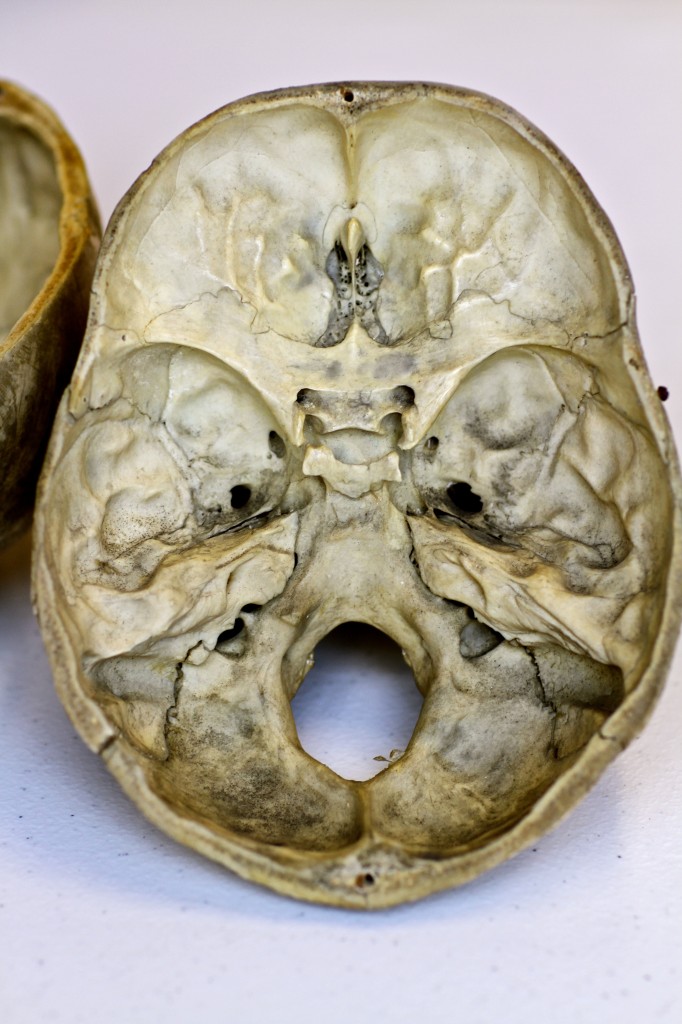Cribriform Plate and Inside of Skull Pose Hazards for Brain
Cribriform Plate and Contours of Inside of the Skull Also Brain Hazard
Call me at 800-992-9447
The direct collision between the inside of the skull and the brain during trauma is not the only hazard posed by the brain’s evolutionary helmet. Severe brain injury or mild brain injury can also occur when the brain slides across the underside of the skull, particularly in an area called the “cribriform plate,” as well as any of the obvious bony hazards shown in the picture below.

The Cribriform Plate and other hazards for gliding contusions are shown in the upper portion of the center of this photo. The upper holes are the areas where the olfactory nerve’s (smell) enter the brain. The holes for the olfactory nerves are within the Cribriform Plate.
The skull is not smooth like the inside of a ball, because in playing its cradle role for the brain, it has to have both ridges (tethers) to keep the brain in place, and also holes (foramina) for nerve tracts to enter and leave the brain. The existence of such holes and ridges help to protect the brain until substantial mechanical force is placed against the skull. But once the exceed the tolerances of human evolution, the tethers can create significant hazards for the soft brain tissue. While brain contusions can occur any where in the brain, the undersides of the brain are the most exposed. Regardless of the direction of the force setting the brain in motion, it is these bony ridges and the Cribriform Plate where the greatest obstacle course exists for brain tissue. The gliding contusions that occur from the sliding of the brain across the inside of the skull are also called “parasagittal contusions.”



